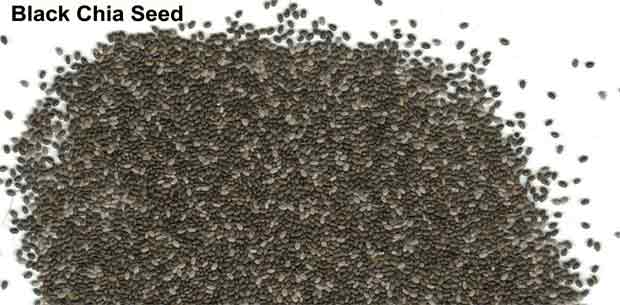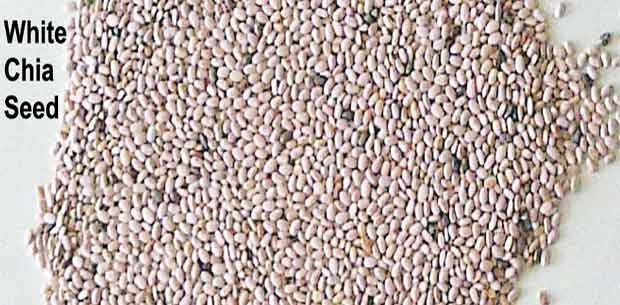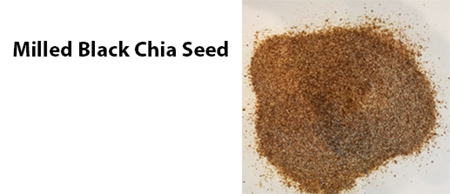Study of the protein quality of a non traditional source
Pallaro, Anabel Nora (1)*, Fernández, Inés (1), Feliú, Maria Susana (1), Vidueiros, Silvina Mariela (1), Slobodianik, Nora (1), Ayerza (h), Ricardo (2), Coates, Wayne (2)
(1) Laboratorio de Nutrición Experimental. Cátedra de Nutrición. Facultad de Farmacia y Bioquímica. Universidad de Buenos Aires. Junín 956 -2° piso – (1113) –
Tel (fax): 54-11-4964-8243. Buenos Aires. Argentina. apallaro@ffyb.uba.ar
(2) Southwest Center for Natural Products Research and Commercialization, Office of Arid Lands Studies, The University of Arizona, Tucson, Arizona 85706, USA.
Introduction
Chía (Salvia hispanica L.) is grown in the rugged mountainous areas extending from the Central West of Mexico to the North of Guatemala.
In the pre-Columbian times, chía was one of the basic foods of the Central American civilizations, after corn and bean and before amaranth. Tenochtitlán, the capital city of the Aztec Empire, received 5,000 to 15,000 tons per year as tribute of the conquered nations. Chía seed was used not only as food but as offering to the Aztec gods as well.
Chía when used in the pagans religious ceremonies was the reason it was eliminated by the Spaniard conquerors and replaced by species brought from the Old World. Corn and beans were an exception, surviving the conquerors efforts against them and today they are some of the main crops of Humanity.
Usually, chía seeds were eaten as food, mixed with other crops. They were also used as beverage mixed with water, ground as flour, in medicines and pressed because the oil was used as a base for face and body paints.
Modern science has concluded that pre-Columbian diets were superior to the diets consumed today in the same region.
Chía seed is a natural source of omega-3 fatty acids, antioxidants and dietetic fiber.
Scientific research and technological development offer an excellent opportunity to bring to the world a “new-old crop”, chía, with a significant nutritional potential for the food industry.
Objective
Study the protein quality of a non traditional food source, using different biological methods.
Materials and methods
Proteic quality evaluation was made with Net Proteic Relation (NPR), Relative Net Proteic Relation (RNPR) and Net Proteic Utilization (UPN) in Wistar rats well nourished when weaned, following standardized methodology.
NRP was determined by feeding the rats an experimental diet based on chía prepared of 10% of protein for 10 days. It was also used a reference diet of casein on 10 % supplemented with methionine to evaluate maximum growth and another free of protein to evaluate protein total efficiency to animal maintenance.
NPR value for each animal was calculated according to the following formula:
NPR = weight earning of the “test” animal + average weight loss of the lote LP
protein eaten by test animal
RNPR value of the diets is obtained as:
RNPR = “test” protein NPR x 100
Caseine + methinine NPR
The UPN method was used to determine the modification in the nitrogen content of the rats skeleton. The rats were fed an experimental diet of 10 % of protein for 10 days.
This nitrogen content was evaluated indirectly after determining body water content using a formula to relate the quotient between both the body Nitrogen and the body water with animal age (Miller and Blender).
Once body Nitrogen was known, the UPN was calculated as:
UPN = B- (Bk-Ik)/ I
with B and Bk corresponding to body Nitrogen of the experimental lot and protein free lot respectively, while I and Ik corresponded to the nitrogen intake of both the experimental lot and protein free lot.
The protein concentration was determined by the Kjeldahl method which obtains the total of all the sources of reduced Nitrogen, using S04H2 conc, (proteins, free amino acids, urea, ammoniacal compounds, etc.) The proteic concentration of the chía seeds was 19.96%.
Digestibility (D) was determined by triplicate and the Biological Value (VB) as UPN/D x 100 (Pellet & Young 1980), (Morrison et al., 1963), (Millar & Bender, 1955).
The obtained information was analyzed with the anova test.
The Chemical Score of the protein was also calculated using as reference protein the corresponding with the preschool.
Results
Biological methods
|
SOURCE |
RNPR |
UPN |
D% |
VB |
|
CHÍA |
75.11 ± 3.41 # |
56.90 ± 5.89 |
74.81 |
76.06 ± 7.88 # |
| 0 ± DE; # Significant difference at p<0.001 level respect to the UPN group | ||||
Chemical Score calculation
|
HISTI |
LEUC |
ISOLEUC |
LYS |
SULFUR |
THREON |
AROMAT |
TRYPTOPH |
VAL |
|
| PROTEIN OF REFERENCE # (mg/g of protein) |
19
|
66 |
28 |
58 |
25 |
34 |
63 |
11 |
35 |
| CHÍA(mg/g of protein) |
25.7 |
58.9 |
32.1 |
44.4 |
18.2 |
34.3 |
74.8 |
12.9 |
51 |
| % PRESENCIA |
100 |
89.2 |
100 |
76.5 |
73.2 |
100 |
100 |
100 |
100 |
| # Protein of reference for 1985 preschool; CS = 73.20 Deficient Sulfurated Amino acid | |||||||||
Discussion
RNPR and VB values were comparable among and statistically different to the UPN (p<0.001) value. The mathematical calculation of Chemical Score (CS=73.20) was comparable to the RNPR and VB values.
Conclusion
The results indicate that CHIA is a good quality protein source and suggests that it is important to consider the incorporation of this non-traditional food source into the diet as complement to other foods.
References
Bourges R. H. and E. Casanueva. 2002. Reseña histórica sobre la nutriología en México”. En: Historias de la Nutrición en América Latina. Ed: Bourges R.H., J.M. Bengoa, and A.M. O`Donnell. SLAN. Publicación SLAN Nº1, pp. 175-216.
Bushway, A.A., P.R. Belya, and R.J. Bushway. 1981. Chía seed as a source of oil, polysaccharide, and protein. J. Food Sci. 46:1349-1356.
Pellet P.L. and V. Young Eds. 1980. “Evaluation of protein quality in experimental animals”. En: Nutritional Evaluation of protein foods. The United Nations University. World Hunger Programme Food and Nutrtition Bulletin Supplement 4(4): 41-57.
Pellet P.L. and V. Young Eds. 1980. “Evaluation and choice of assay procedures”. En: Nutritional Evaluation of protein foods. The United Nations University. World Hunger Programme Food and Nutrtition Bulletin Supplement 4(6):76-89.
Pellet P.L. and V. Young Eds. 1980. “Some rat and human bioassay procedures”. En: Nutritional Evaluation of protein foods. The United Nations University. World Hunger Programme Food and Nutrtition Bulletin Supplement 4(9):103-117.
Morrison A.B., Z.I. Sabry, N.T. Gridgeman and J.A. Campbell. 1963. “Evaluation of protein in foods. VIII. Influence of Quality and Quantity of Dietary Protein on Net Protein Utilization”. Can. J. of Biochem. and Physiology 41: 275-281.
Miller D.S. and A.E. Bender. 1955. “The determination of the net utilization of proteins by shortened method”. Brit. J.Nutr. 9:382-388.
Weber, C.W., H.S. Gentry, E.A. Kohlhepp, and P.R. McCrohan. 1991. The nutritional and chemical evaluation of chia seeds. Ecology of Food and Nutrition, 26:119-125.







